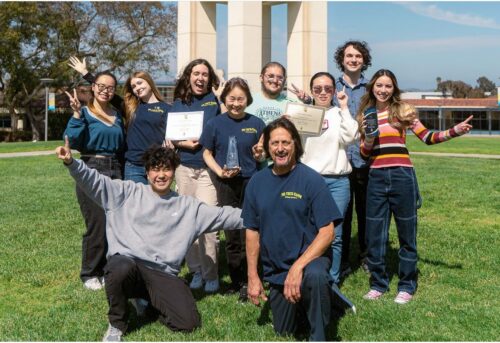Large, in-person gatherings are looking less likely through the remainder of 2020; but, unlike the spring when everyone cancelled their events, many of the shows will go on virtually. This will make your event more inclusive and accessible to those who previously couldn’t have attended. It’s also easier said than done.
In early March, we were preparing to host our annual convention, PTK Catalyst, in April in Dallas, Texas. This three-day event draws approximately 4,000 college students, faculty, and administrators from across the country. We needed to elect new officers, and we had award presentations, more than a hundred breakout sessions, multiple keynote speakers, a college fair, and half a dozen special events planned.
Rather than cancelling, we worked with our production team, TEK Productions in Orlando, Florida, through multiple scenarios before moving forward online. As you plan your regional fall meeting, here are three things we learned that you need to consider in the process.
1. How will your content translate in a virtual platform?
Evaluating your content is imperative. You need to provide enough to maintain conference registration fees and event sponsors, but you must also consider your audience’s viewing environment.
“Viewers’ appetite for length of content is shorter and experienced much differently in a virtual viewing environment than in a live show,” said Kari Hyatt, Vice President and Executive Producer at TEK Productions. “At the heart of it is, will your message translate when your method changes?”
You cannot simply take your original, in-person event schedule and move it online. Will your speakers’ presentations still work virtually? What are you willing to let go of? When PTK Catalyst went virtual, we made tough decisions to condense 10 hours of ballroom content down to just three or four hours.
What about the actual viewing — does your audience need to take in this content at the same time? If so, keep sessions as brief as possible and schedule them at times when the most people will be able to watch. If not, an online webinar format for each session may work, and those unable to attend live can view recordings at their convenience.
2. Do you need to hire outside help?
At a very basic level, you can record a video and post it for others to watch. But, if you want to maintain a certain level of quality — and keep it worth the registration cost — it’s a good idea to invest in a production team if you can.
If presenters will be joining remotely, find someone to help ensure the technology they have will work. If any of them have an unstable Internet connection, you may want to prerecord their segments for playback during your conference. This can get tricky if you’ve never hosted a virtual event before, so see if someone in your college’s marketing or IT department can help.
Make sure all parts of your session are scripted, and meet with everyone involved at least once to read through everything. Consider having a speech or communications professor advise presenters on how they may need to tweak their delivery for an online audience. A good coach is key.
“The emotional weight of performing in this environment is difficult for people to do,” Hyatt said. “Even if you have a structure to handle registration, delivery method, there’s still a point where you need a production company that’s going to come in and coach and wrap this in a wrapper that will satisfy a virtual audience.”
3. How can you keep your audience engaged?
A ballroom or meeting space is a controlled environment. When you shift to someone’s laptop in their living room, you’re competing with a number of distractions and you’ve lost the collective energy of in-person attendance.
Find a way to engage people in their homes. Promote your event hashtag and ask people to share pictures or videos of how they’re watching, who they’re with, even what they’re wearing. Develop event-specific Facebook frames and encourage your chapters to use them on their profile pictures.
“There’s going to be a lot of thought given to stimulating people in ways that are not electronic,” Hyatt said.
Engagement also goes back to how your content is delivered. In a virtual platform, general sessions need to be short and succinct. Utilize online meeting rooms for breakout sessions. To be most effective, what you do virtually should look almost nothing like what you would have done in-person.
Moving your live event into a virtual format is hard; but, if you’re willing to let some things go, hire good help, and get creative with your engagement, your audience will enjoy a shared experience that will make them all the more eager to attend in-person when it’s safe to do so.




